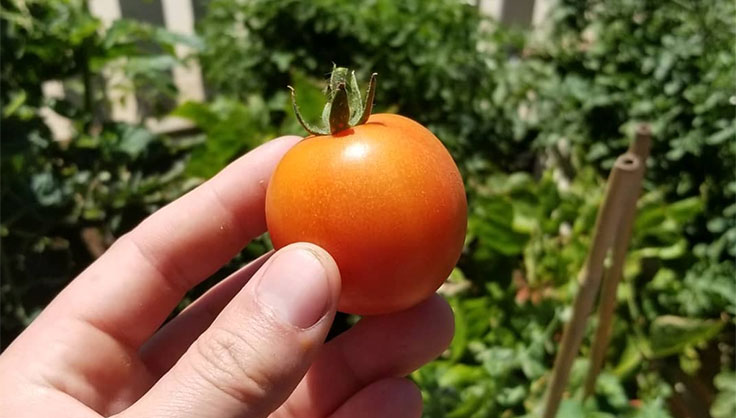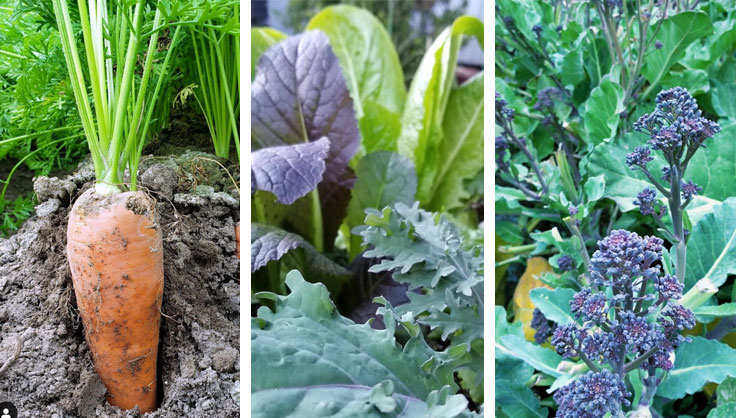
Ah, the vaunted Zone 10… the holy grail of gardening in the United States. With an average annual minimum temperature above freezing at 35-40 degrees F, many colder-climate gardeners drool over the harvests Zone 10 gardeners pull out of their gardens well into the winter months.
But with this fantastic growing advantage comes the extra planning and strategy behind squeezing as much yield out of your garden every year as possible. Zone 10 gardeners don’t have to put their gardens to sleep with a fall cleanup and winter protection process, giving them ample time to grow even more produce. However, it can be a struggle to grow cold-loving veggies, and all of the standard planting timing is a bit off for those of us growing in a warmer zone.
The Cold-Loving Veggie Struggle
As a lover of cauliflower and broccoli, I’ve often found both of these crops struggle to grow in Zone 10. They prefer cool weather to form a tight, compact head that both looks and tastes amazing. The warm weather also means more annoying pests are present throughout the growing cycle.
Starting your cold-loving brassicas and other crops in late winter or early fall is a fantastic option. They’ll start coming to maturity at the coldest parts of the year for Zone 10, giving them the best chance of developing properly.
You can also grow classic fall crops straight through winter with minimal frost protection. Spinach, beets, carrots, cabbage, and almost all leafy greens will thrive in the cool, but not freezing temperatures of Zone 10.

The “Second Summer”
Because we Zone 10 gardeners have such a long period of warm months, with creative succession sowing you can get at least two full cycles of your summer crops. Start your favorite summer crops indoors in February, and get them in the ground as soon as temperatures are favorable.
Then, immediately start another round of seeds. When your first round of summer crops mature and come to harvest, you can start pulling them out as soon as production drops off and pests or diseases start to take hold. Swap them out with your fresh batch of transplants and enjoy another full harvest of vibrant, healthy summer crops.

Battling The Heat
Sure, it’s great to have a long growing season, but that season can often be rife with annoying pests like cabbage loopers, or heat waves that can decimate your garden if you’re not careful.
In hot weather, the plants in your garden will require drastically more water to keep growing and functioning well. Consider a heavy application of wood chip mulch to protect the soil surface, keep your plants’ roots cool, and decrease water evaporation from the soil.
Drip irrigation on a timer throughout the day can help to mitigate some of the effects of extreme heat in the summer as well. It’s usually a good idea to water deeply and less often, but in heat waves your plants may need a bit extra to make it through the day without damage.
If you’re in a Zone 10 climate with extreme heat, consider the nuclear option…shade cloth. This handy tool quite literally cuts the amount of light that your plants receive throughout the day. Plants clearly need light to survive, so you have to be careful not to use too high a percentage of shade cloth. Usually a 30-50% shade cloth is perfect for vegetable gardens, as it still lets through over half of the available sunlight, while cutting a significant amount of heat from reaching your plants.
Keeping Soil Healthy
Our long growing season in Zone 10 often means we get 3-4 rounds of crops out of our beds every single year. All of that production can take a toll on our soil. I recently got poor results out of a bed in my front yard garden and was quite confused, until I got a soil test and realized it was almost completely devoid of nitrogen! After a healthy dose of feather meal, a 12-0-0 organic fertilizer, that bed was back in action and ready to pump out more produce.
As veggie gardeners, we’re pulling a lot of nutrition out of our soil every time we harvest, so make sure you’re amending with high-quality compost and organic matter. It helps to get a soil test at least once or twice per year to see what’s going on in your soil as well. I like to do it after I harvest particularly heavy feeders as well to see how they’ve affected the nutrient composition of my soil.
Zone 10 gardening is a wondrous experience, allowing you to experience the joy of growing plants year-round. With these growing tips, you should have a more balanced and fruitful garden throughout the entire year.
[“source=gardeners”]











